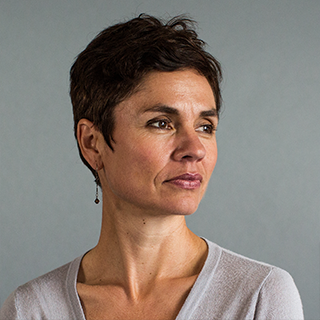
Maya M. Foty
AIA, LEED AP
Principal
Recently I had the opportunity to spend time in France investigating the intersection of preservation and sustainability. I did this under the auspices of the Richard Morris Hunt Fellowship, cosponsored by the American Architectural Foundation and the French Heritage Society. The fellowship offers midcareer American and French design professionals an intensive six-month exchange experience that showcases the latest scholarship and practice around historic preservation and architectural heritage. The fellowship was founded in 1990 by Michèle le Menestrel Ullrich with the intent of introducing experienced preservation architects in France and the United States to preservation practices and techniques in each other’s countries.
The topic I proposed for my fellowship was “How Preservation Projects in France Achieve Sustainability Standards.” While green building rating systems like the U.S. Green Building Council’s Leadership in Energy and Environmental Design (LEED) program have recently made advances in recognizing and quantifying the energy benefits of historic buildings, in general, they are designed to address new construction. The standards then have to be adapted to work with existing conditions, and this often means sacrificing historic fabric or historic character.
In the United States, the Secretary of the Interior’s Standards for the Rehabilitation of Historic Buildings provide general guidance for appropriate alterations to historic buildings, but in my experience, achieving the required ratings points often outweighs appropriate preservation solutions. In order for our historic resources to have viable economic lives, it is our responsibility as preservationists to identify innovative and creative ways to improve their efficiency and ability to provide a comfortable and safe interior environment for their occupants.
The first goal of my project was to understand the current rating systems in France and to identify if these systems acknowledge inherently sustainable features of historic buildings. The second goal was to identify specific examples of how French architects have been able to successfully meet the stringent requirements of the French rating systems. How did they detail exterior wall and roof assemblies to achieve energy requirements while retaining historic fabric and character? How were they able to achieve minimal occupant comfort requirements without altering the original interiors, including wall configuration, lighting, and mechanical systems?
The three separate trips of my fellowship were spent at the offices of several Architectes en Chef des Monuments Historiques (Chief Architects of National Historical Monuments, recruited by the French government through a competition), with Architectes du Patrimoine (Heritage Architects, specialists in architectural and urban heritage) at the Ministry of Culture and the Centre des Monuments Nationaux, and with various professional organizations. I also spent a significant amount of time with the École de Chaillot, where preservation architects are trained.
I quickly came to realize that the framework for historic preservation, including the way green rating systems are used, is completely different in France than it is in the United States in almost every aspect. In order to understand how sustainability standards are being incorporated into the historic fabric, I had to first understand the context within which historic buildings are maintained, preserved, and “modernized.” I found that it was very hard to compare French preservation practices to those in the United States. Every part of the French system—historical, political, social—is so different, and the building codes and energy efficiency standards (as they are applied to listed buildings) that U.S. architects are required to abide by seem far less constraining in France.
I got the impression that this is changing, however. The majority of the important built heritage in France is not up to current EU codes for accessibility and energy efficiency, so France has to catch up to the rest of Europe. In some ways, I felt like my topic was 10 years too early.
I did, however, appreciate the reverence with which the country treats its historic built fabric. One architect went so far as to say that the current onslaught of accessibility improvements was “an abomination” that we will regret in 50 years, much as we regard the upgrades of the post WWII-era with disgust. While there is no question that making all buildings accessible is of fundamental importance, I came to wonder if in some way we could be a little more flexible when it come to upgrading our historic buildings, some way that we could avoid having to implement a 5′-0″ turnaround radius all the time, or to meet every single prerequisite of LEED to get the required LEED label. Maybe the fact that France hasn’t been so quick to apply all the “recent” code requirements means that they will have a little more time to develop sensitive interventions in upgrades of their precious built heritage.
Photos courtesy of Maya M. Foty.

